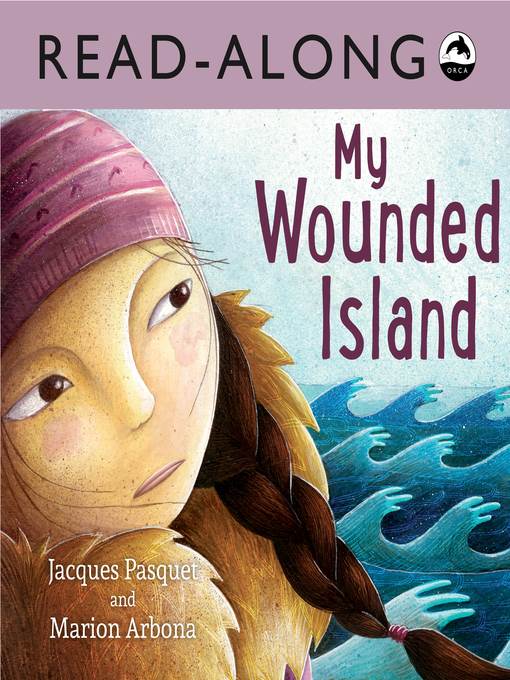
My Wounded Island
فرمت کتاب
ebook
تاریخ انتشار
2017
Lexile Score
790
Reading Level
3-4
نویسنده
Heather Gouldناشر
Orca Book Publishersشابک
9781459817753
کتاب های مرتبط
- اطلاعات
- نقد و بررسی
- دیدگاه کاربران
نقد و بررسی

June 12, 2017
In pained first-person narration, an Iñupiat girl named Imarvaluk shares her concerns about the force of nature “that is slowly devouring our island.” Working in mixed media, Arbona (The Good Little Book) pictures this unseen threat as a jellyfishlike creature that swoops toward Imarvaluk’s Arctic island, and she uses delicately scratched lines to trace its sweeping tendrils and angry, hungry countenance. Halfway through Pasquet’s story, his young heroine reveals what some readers may have already guessed: the threat facing this Iñupiat island is a manmade one, not supernatural in origin (“The climate is changing, the earth is warming, and this heat gives the creature all of its destructive force”). The care and tenderness with which Imarvaluk describes her home throws the consequences of climate change into stark relief. “What worries Grandfather the most,” she concludes, “is that this creature will make not only our island disappear but also the memories of our people.” A brief glossary, defining both geographical and cultural terms, adds a bit more heft to this environmental conversation starter. Ages 5–8.

July 1, 2017
Gr 1-3-This somber story introduces the effect of climate change on the Inupiat, Native people inhabiting Sarichef, a small island near the Arctic Circle. Imarvaluk, a young girl born and raised on the island, describes the sea that is slowly "devouring" the land as having been "bewitched by an evil creature." The small wooden houses need to be moved inland from the coast, as it is increasingly engulfed by water. Hunting for their livelihood, hunters can't use their snowmobiles on the pack ice, as it is no longer strong enough to support them. Outsiders studying these effects have come to the island and explained that warmer temperatures are causing glacial melting and rising water. Residents fear Sarichef may vanish completely under the sea. While some families consider moving to the mainland, Imarvaluk's grandfather worries that if the island disappears, so will the traditions and memories of the Inupiat people. The mixed-media, full-bleed illustrations use a mostly bright palette, which provides some relief from the serious tone of the tale. Scenes of the encroaching water are particularly powerful. VERDICT Considering that there are few picture books on this subject, this introductory tool fills a gap. Recommended where there is interest or a curricular need.-Sara-Jo Lupo Sites, George F. Johnson Memorial Library, Endicott, NY
Copyright 2017 School Library Journal, LLC Used with permission.

June 1, 2017
Imarvaluk fears for the safety of her island home off the coast of Alaska.Imarvaluk's Alaskan Native people, the Inupiat, have lived near the sea since the beginning of memory. Her name in English means "the song of the waves," but though she loves her name, she finds it hard to continue to love the ocean. Her family lives on a small island, Sarichef, so small it would be a tiny speck on any map of the Arctic Circle. The Inupiat people have adopted many modern ways: "We no longer live in igloos," Imarvaluk tells readers, but in wooden houses, and most prefer snowmobiles to their traditional dog sleds. Her grandfather's dogs used to scare Imarvaluk, but now she is more afraid the encroaching sea will soon devour their island home. Outsiders studying the phenomenon have explained how climate change is causing the glaciers to melt and the sea to rise. The villagers are moving many houses, including Imarvaluk's, inland, but they also understand someday they will have to leave their homeland--and their traditional ways--behind. Although it perpetuates the myth that igloos were or are permanent domiciles, Pasquet's moving story does introduce the concept of climate change, and its imminent catastrophic impact on many indigenous communities, to young readers. Arbona's illustrations are by turns lyrical and frightening, truly indicative of the themes of the book. A moving if oversimplified look at a very real threat. (Picture book. 4-8)
COPYRIGHT(2017) Kirkus Reviews, ALL RIGHTS RESERVED.

























دیدگاه کاربران